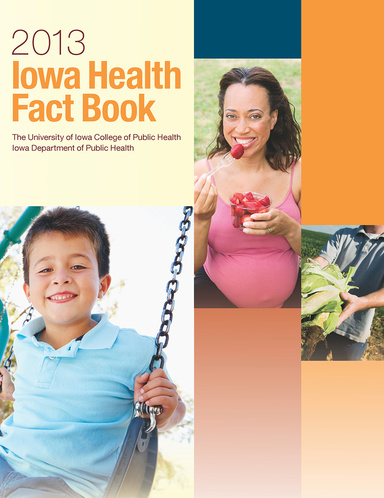
Unintentional poisoning is a growing public health problem for Iowans. The rate of accidental poisoning in Iowa has reached an all-time high and continues to rise steadily, according to data from the 2013 Iowa Health Fact Book.
The University of Iowa College of Public Health, in partnership with the Iowa Department of Public Health, has released the 2013 edition of the fact book, a broad-ranging report covering the health and health-related behaviors of Iowans. The latest edition is the ninth in a series of biennial publications. An electronic version of this and previous reports are available online.
Unintentional poisoning deaths, including those resulting from prescription drug overdose and interactions between prescription medications and alcohol or illicit drugs, increased from 417 in the 2002-2006 reporting period to 868 in the 2006-2011 time period, an increase of 108 percent. Statewide, the rate of unintentional poisoning deaths rose from 2.9 per 100,000 population in 2006 to 5.9 per 100,000 in 2011.

“Unintentional poisoning can happen at any age, not just in children, and continues to be a major problem for Iowans,” says Jane Pendergast, director of the Center for Public Health Statistics and professor of biostatistics at the University of Iowa. “Research out of our college states that the increase in deaths parallels an increase in the prescription of narcotics, muscle relaxants, and other types of sedatives. This trend highlights the need for better patient education about the risks of prescription medications and the important role of physicians and pharmacists in helping patients manage their medication regimen.”
The fact book assembles health data on other areas such as prenatal and infant health, infectious diseases, cancer and other chronic diseases, and injury. Health and social behaviors, high school graduation, poverty rates and demographics, along with county-specific health care facilities and providers, provide a well-rounded picture of the current health landscape in Iowa.
“With this book, we continue to provide a comprehensive summary of the health trends in Iowa, a tool that is useful to Iowa's health care providers, health policymakers, public health practitioners, health researchers and members of the media alike,” says Pendergast. “It’s a ‘one-stop shop’ that helps to identify where progress is being made and where emerging problems are surfacing with respect to health outcomes, social determinants of health, health behaviors, and health care resources.”
“We are pleased to collaborate with the University of Iowa College of Public Health in collecting and analyzing data and then preparing it for publication,” says Mariannette Miller-Meeks, Director of the Iowa Department of Public Health. “This partnership helps to provide important information that can be utilized to improve the health of all Iowans.”
Some other notable trends in the health of Iowans include:
- The percent of self-reported binge drinkers in Iowa continues to be significantly higher than the national median, but is decreasing slightly;
- Deaths from falls is steadily rising;
- Fetal, neonatal, perinatal, and infant deaths have steadily decreased over the last 20 years;
- The rate of sexually transmitted infections continues its rise over the last 20 years,
- Heart disease mortality (still the leading cause of death in Iowa) has continued its slight, yet steady, decline;
- While the incidence rates of some cancers (such as skin melanoma and nonHodgkin’s lymphoma) have steadily increased, their respective mortality rates are nonetheless holding steady or decreasing.
Pendergast believes the data in the Iowa Health Fact Book can be used to identify focus areas for public health professionals.
“The data tell us that mortality due to falls is steadily rising,” notes Pendergast. “Fortunately, falls are largely preventable with the right training and safeguards. This is an example of the data showing us an area where we can have a significant impact on the health of older Iowans.”
Data were collected from state and national sources, including the Iowa Department of Public Health, the Iowa Department of Inspections and Appeals, the Iowa Department of Education, the Iowa Consortium for Substance Abuse Research and Evaluation, the Centers for Disease Control and Prevention, and the U.S. Census Bureau. The UI-based State Health Registry of Iowa, the SEER Program of the National Cancer Institute, the Iowa Registry for Congenital and Inherited Disorders, and the Office of Statewide Clinical Education Programs also provided data.